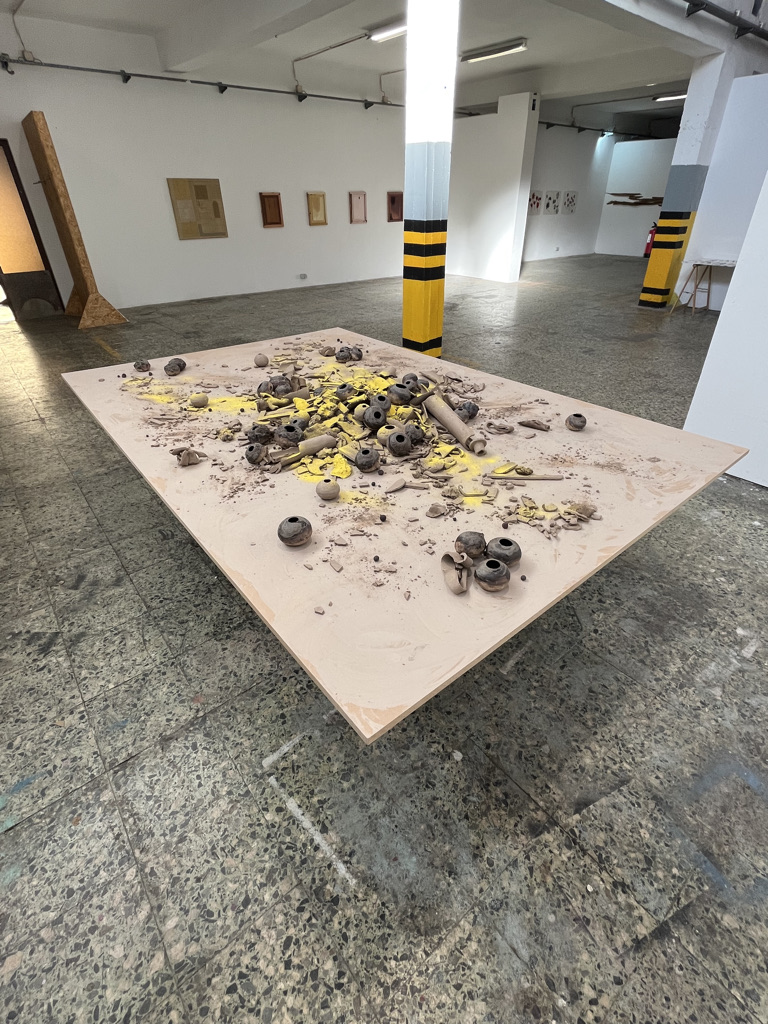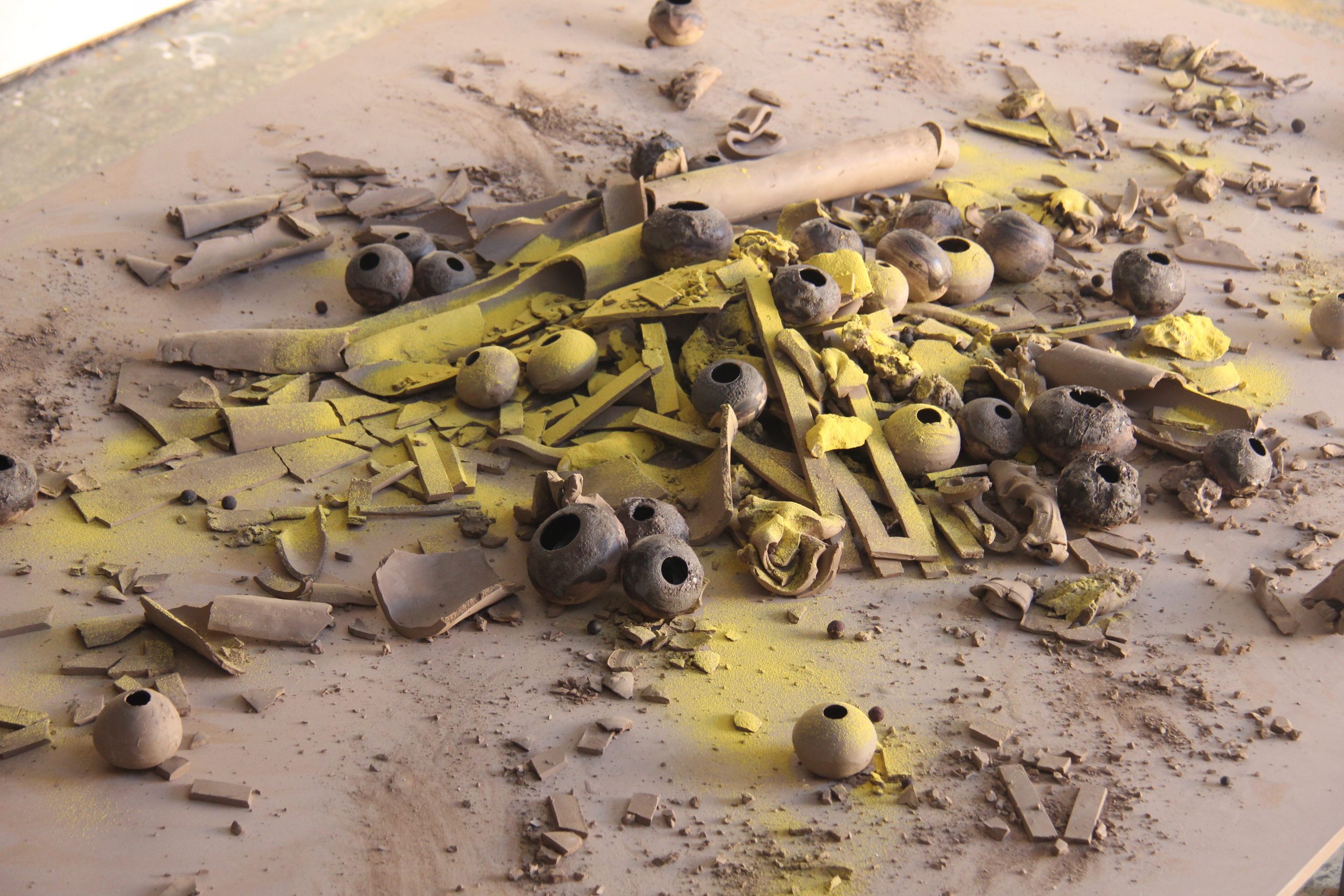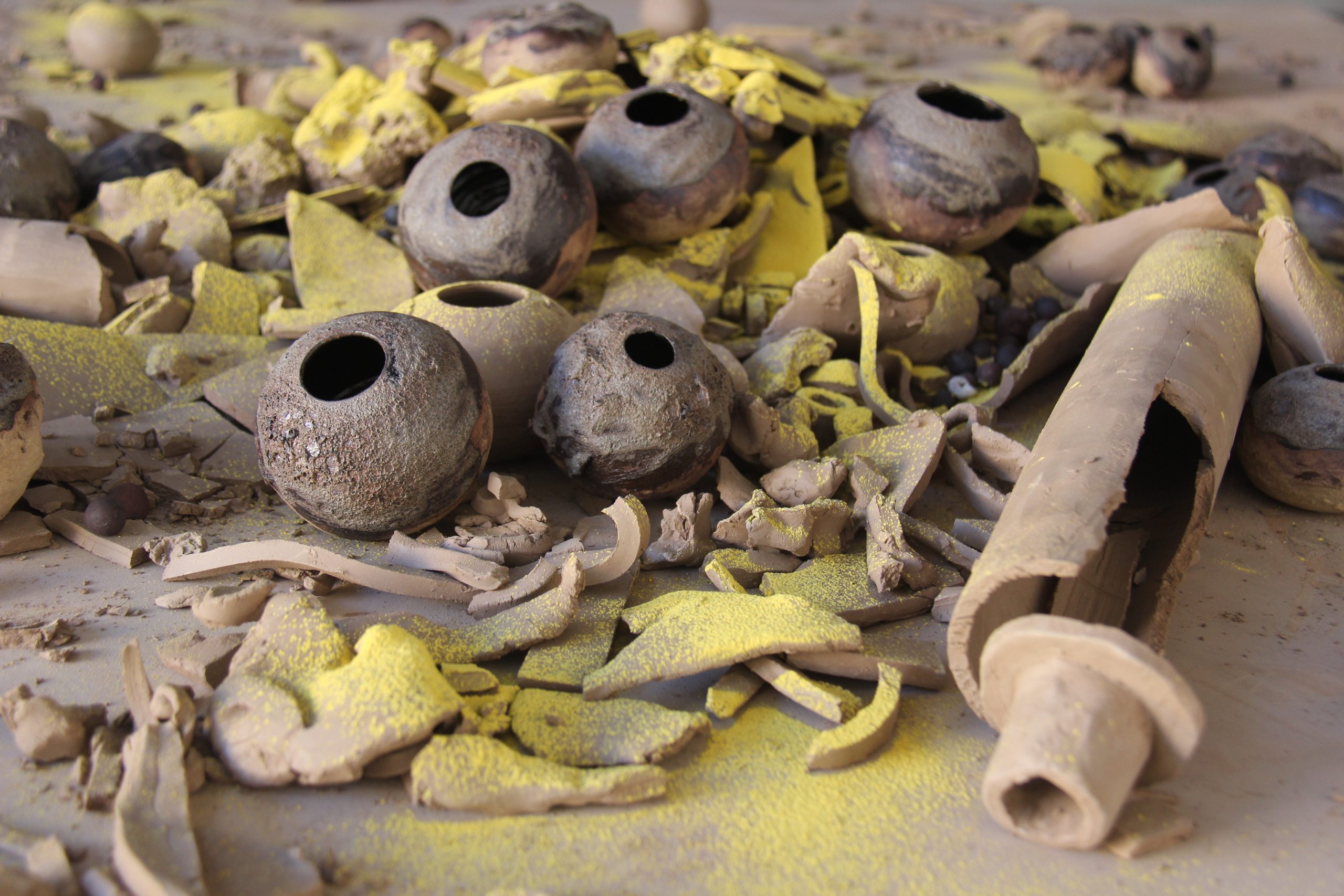see-an-enemy 2022
“As its crumpled body drifted past, Redfoot, still wearing its extraordinary erect war-corona, bent over and down, on to the spot Bluefoot had just vacated, and deposited there a single tiny anemone, an asexual clone of itself, generated and brooded within its body cavity, placed to occupy the neighbouring area of rock that would now become part of its own colonial territory”1
Drawing parallels between this subterranean world and the linguistic and cultural legacy brought about through human colonisation, see-an-enemy explores multiple ideas of territory’, dipping into the dark undercurrent of contemporary life, looking for bubbles filled with hope, thoughtfulness, and generosity.
A couple of years ago I started to make work with clay. Throwing on the wheel, I became interested in repetition and the inevitable mistakes and inconsistencies that are part of the process of learning new skills and making work by hand. In this work ceramic vessels, both fired and un-fired, mimic the sea anemone in a failed attempt to ‘clone’ itself, with external forces changing the vessel’s appearance, rendering each one unique.
“Each polyp may be genetically identical to every other, but each ‘caste’ within the clone is a different form. Different local conditions – life on the free outer edge where there are no enemies, the battlefront, the safe centre – summon different body forms from the same genetic source. Even here, in the very simplest of animals, the interplay of inheritance and environment defines the experience of life.”2
During a residency at PADA (Barreiro, Lisbon) in 2022 I worked at a local ceramic studio to throw and fire new work alongside hand-building architectural structures found around the Barreiro industrial estate. I then smashed the unfired clay structures creating piles of rubble. The fired vessels were then placed amongst fragments of clay, the ‘spoils’ from the making process, all bedded on a fine yellow powder. These elements reference the post-industrial heritage of Barreiro through its crumbling architecture and history as a site for the production of chemicals such as the distinctive yellow sulphur used in fertilizers. In this work materials and forms become proxies for human life and the impact we have on our surroundings.


1 – Extract from Adam Nicolson’s ‘The Sea is not made of Water – Life between Tides’ 2021 p134
2 – Extract from Adam Nicolson’s ‘The Sea is not made of Water – Life between Tides’ 2021 p140
